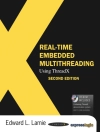Many wireless systems like GSM, GPRS, UMTS, Bluetooth, WLAN or Wi MAX offer possibilities to keep people connected while on the move. In this flood of technology and claims that one single resource will serve all our needs, this book seeks to enable readers to examine and understand each technology, and how to utilise several different systems for the best results.
Communication Systems for the Mobile Information Society not only contains a technical description of the different wireless systems available today, but also explains the thoughts that are behind the different mechanisms and implementations; not only the ‘how’ but also the ‘why’ is in focus. Thus the advantages and also limitations of each technology become apparent.
- Provides readers with a solid introduction to major global wireless standards and compares the different wireless technologies and their applications
- Describes the different systems based on the standards, their practical implementation and the design assumptions that were made
- The performance and capacity of each system in practice is analyzed and explained, accompanied with practical tips on how to discover the functionality of different networks by the readers themselves
- Questions at the end of each chapter and answers on the accompanying website make this book ideal for self study or as course material
- Illustrated with many realistic examples of how mobile people can stay in touch with other people, the Internet and their corporate intranet
This book is an essential resource for telecommunication engineers, professionals and computer science and electrical engineering students who want to get a thorough end-to-end understanding of the different technical concepts of the systems on the market today.
Содержание
Preface.
List of Figures.
List of Tables.
List of Abbreviations.
1. Global System for Mobile Communications.
1.1 Circuit-Switched Data transmission.
1.2 Standards.
1.3 Transmission Speeds.
1.4 The Signaling System Number 7.
1.5 The GSM Subsystems.
1.6 The Network Subsystem.
1.7 The Base Station Subsystem (BSS).
1.8 Mobility Management and Call Control.
1.9 The Mobile Station.
1.10 The SIM card.
1.11 The Intelligent Network Subsystem and CAMEL.
1.12 Questions.
2. General Packet Radio Service.
2.1 Circuit Switched Data Transmission over GSM.
2.2 Packet Switched Data Transmission over GPRS.
2.3 The GPRS Air Interface.
2.4 The GPRS State Model.
2.5 GPRS Network Elements.
2.6 GPRS Radio Resource Management.
2.7 GPRS Interfaces.
2.8 GPRS Mobility Management and Session Management (GMM/SM).
2.9 Session Management from a User Point of View.
2.10 WAP over GPRS.
2.11 The Multimedia Messaging Service (MMS) over GPRS.
2.12 Web Browsing via GPRS.
2.13 Questions.
3. University Mobile Telecommunications System.
3.1 Overview, History and Future.
3.2 Important New Concepts of UMTS.
3.3 Code Division Multiple Access (CDMA).
3.4 UMTS Channel Structure on the Air Interface.
3.5 The UMTS Terrestrial Radio Access Network (UTRAN).
3.6 Core Network Mobility Management.
3.7 Mobility Management in the Cell-DCH State.
3.8 UMTS CS and PS Call Establishment.
3.9 UMTS Release 99 Performance.
3.10 UMTS Release 5: High Speed Downlink Packet Access (HSDPA).
3.11 UMTS Release 6: High Speed Uplink Packet Access (HSUPA).
3.12 UMTS and CDMA2000.
3.13 Questions.
4. Wireless Local Area Network.
4.1 Wireless LAN Overview.
4.2 Transmission Speeds and Standards.
4.3 Wireless LAN Configurations: From Ad-hoc to Wireless Bridging.
4.4 Management Operations.
4.5 The MAC Layer.
4.6 The Physical Layer.
4.7 Wireless LAN Security.
4.8 Comparison of Wireless LAN and UMTS.
4.9 Questions.
5. 802.16 and Wi MAX.
5.1 Overview.
5.2 Standards, Evolution and Profiles.
5.3 Wi MAX PHYs for Point to Multipoint FDD or TDD Operation.
5.4 Physical Layer Framing.
5.5 Ensuring Quality of Service.
5.6 MAC Management Functions.
5.7 MAC management of user data.
5.8 Security.
5.9 Advanced 802.16 Functionalities.
5.10 Mobile Wi MAX: 802.16e.
5.11 Wi MAX Network Infrastructure.
5.12 Comparison of 802.16 with UMTS, HSDPA and WLAN.
5.13 Questions.
6. Bluetooth.
6.1 Overview and Applications.
6.2 Physical Properties.
6.3 Piconets and the Master/Slave Concept.
6.4 The Bluetooth Protocol Stack.
6.5 Bluetooth Security.
6.6 Bluetooth Profiles.
6.7 Comparison between Bluetooth and Wireless LAN.
6.8 Questions.
Index.
Об авторе
Martin Sauter is a research and development engineer with Nortel. His current position is Wireless Solution Architect, responsible for end-to-end project solutions. He has extensive knowledge of GPRS and UMTS networks and holds a Dipl. Ing. (FH) degree from the University of Applied Sciences Ravensburg, Germany.












